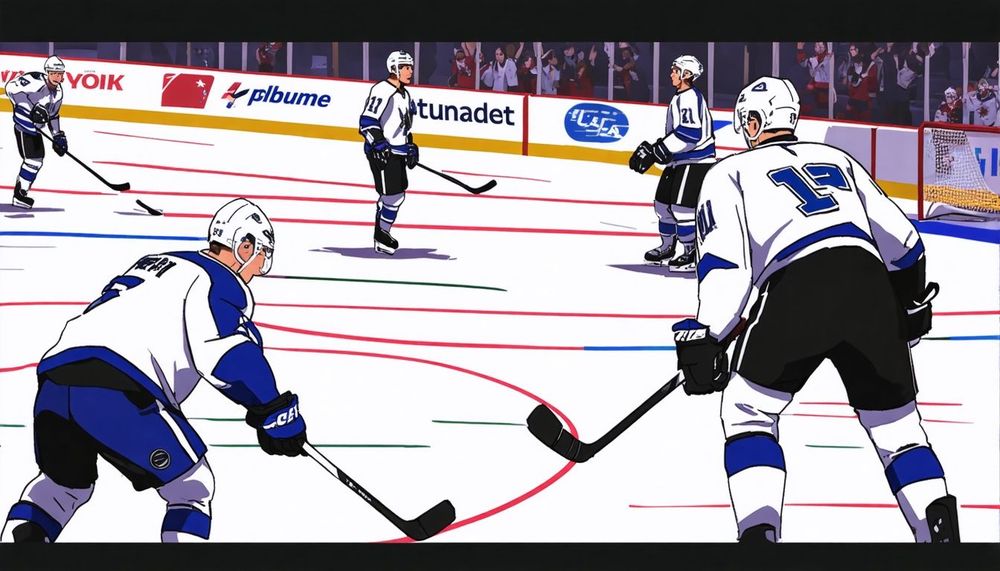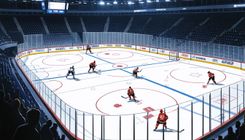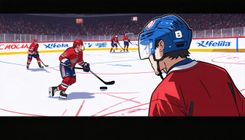NHL CBA Changes: New Development Path for 19-Year-Old Prospects

The current NHL collective bargaining agreement (CBA) is set to expire in September 2026. This has significant implications for the league, particularly for those who have been involved with the sport over the past decade. Recently, however, owners and the NHL Players Association reached an agreement on the framework for a new deal. Although the full Memorandum of Understanding has yet to be publicly released, NHL insider Frank Seravalli highlighted an intriguing change: beginning with the implementation of the new CBA, each NHL team will be permitted to assign one 19-year-old prospect to their American Hockey League (AHL) affiliate each season. This policy could potentially affect up to 32 players annually, representing a substantial shift in the development landscape for NHL prospects.
Under the existing CHL-NHL agreement, prospects drafted from one of the Canadian major junior leagues—specifically, the Ontario Hockey League (OHL), Western Hockey League (WHL), or Quebec Major Junior Hockey League (QMJHL)—cannot be assigned to the AHL or East Coast Hockey League (ECHL) until they either turn 20 years old or complete four seasons in the CHL. Notably, players drafted from other junior leagues who later join a CHL team do not fall under this restriction. As the new CBA will not come into effect until the 2026-2027 season, the first group of players it will potentially impact are those born in 2007. For instance, Vancouver Canucks prospect Braeden Cootes, who will turn 19 in February 2026, could be assigned to the Abbotsford Canucks later that fall if the Canucks' front office determines that the WHL is no longer ideal for his development.
This new rule is particularly significant as it allows a freshly drafted CHL player who turns 19 in the fall immediately following the NHL Draft to avoid returning to the CHL. A prime example of this scenario is 2026-eligible top prospect Ryan Roobroeck, born in September 2007. If Roobroeck signs his entry-level contract (ELC) promptly and remains at his NHL team's development camp, he may be assigned directly to the AHL instead of returning to the Niagara IceDogs of the OHL. This change presents CHL-affiliated prospects with an essential new development opportunity, a path that has long been needed. In previous years, the lack of such a development option hindered prospects like Dylan Strome, who performed at a level too high for the OHL but was not sufficiently prepared for the NHL, ultimately stalling his career after being mismanaged by the Arizona Coyotes. Conversely, teams may choose to assign their top 19-year-old prospects to the AHL, which offers a more competitive environment than the junior leagues. This development path can facilitate acceleration in their skill advancement and readiness for the NHL.
Recent examples, such as Cole Perfetti's assignment to the Manitoba Moose during the 2021 pandemic season and Shane Wright’s exception to play with the AHL's Coachella Valley Firebirds during the 2023-2024 season, validate the potential benefits of playing in the AHL over the CHL. The specific clause, described by insiders as 'one player per organization per season,' implies that teams would not be allowed to assign multiple 19-year-olds temporarily to the AHL in succession. However, this is unlikely to be a significant concern since it is uncommon for teams to have more than one 19-year-old prospect simultaneously positioned for such an accelerated development path.
This newly proposed framework is a considerable advantage for NHL teams wishing to keep their top prospects closer to their developmental systems, facilitating better observation and direct interaction with players. However, this might present challenges for CHL teams, particularly those with numerous high-level prospects. The one-player limit seems to take into account the CHL's interests, as teams would be reluctant to lose their best players. While NHL teams may assign only one player per season, there is no restriction on the number of players that can be drawn from each CHL team, potentially affecting top organizations with many prospects drafted into the NHL.
The implications of this new pathway could also catalyze discussions surrounding NHL eligibility rules, as the draw of NCAA scholarships for exceptional players may diminish. Speculation surrounding NIL (Name, Image, Likeness) regulations also raises questions about talent retention in the CHL. With this new developmental option, players who are not quite ready for the NHL but do not want to return to junior leagues can take the step into professional hockey earlier, allowing them to hone their skills against tougher competition while avoiding the pitfalls of stagnation in junior hockey.
A prominent example of a team that would likely benefit substantially from this new development strategy is the OHL's London Knights. The Knights have consistently been a powerhouse in junior hockey, which may inadvertently limit the opportunities for their players to face significant challenges, thus delaying their growth. Consequently, NHL teams may opt to assign promising 19-year-old prospects directly from the Knights to the AHL, which would provide them with a more challenging environment to foster their development effectively.
Furthermore, NHL teams and player agents alike may find additional benefits in this policy change. For instance, Scott Wheeler, a prospect writer for The Athletic, notes that multiple agents have indicated a trend where players may prefer the CHL-to-AHL pathway—with its ELC signing bonuses—over pursuing options like the NCAA. This dynamic is particularly salient given the uncertainty surrounding NIL funding. Additionally, a CHL general manager pointed out that the specifics of the CBA may enable players to secure arbitration rights a year earlier by opting for the AHL route, a substantial incentive for players and their representatives. Overall, this newfound option presents numerous opportunities for players who wish to forge their distinct paths while avoiding the pitfalls of traditional junior paths, further complicating the landscape of player development in professional hockey.









